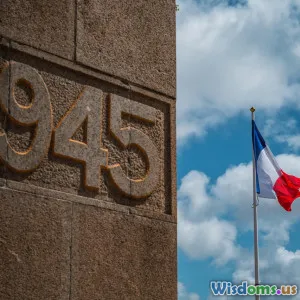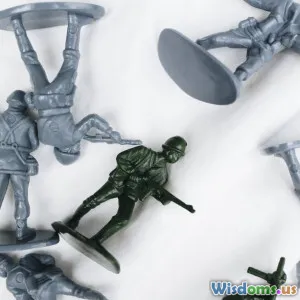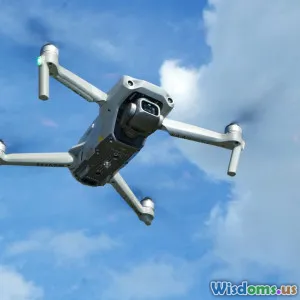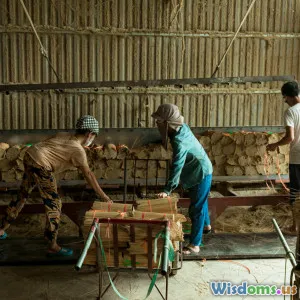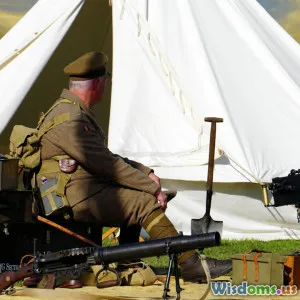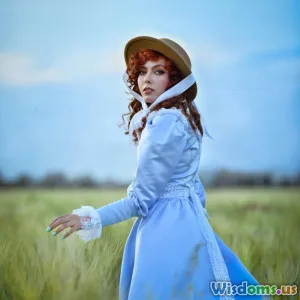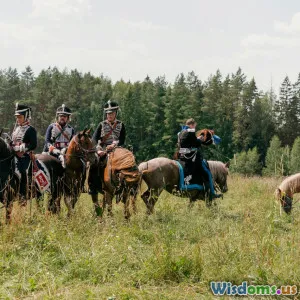
A Close Look at Women’s Evolving Roles on the WWII Home Front
10 min read Explore how WWII transformed women's roles on the home front, reshaping society and empowering future generations through work, activism, and innovation. (0 Reviews)
A Close Look at Women’s Evolving Roles on the WWII Home Front
Introduction
World War II was a period of immense upheaval that reshaped global geopolitics and social dynamics. Among the most profound changes was the transformation in women’s roles on the home front. As millions of men enlisted and left their jobs to serve in the military, women stepped into roles previously denied to them. This epoch not only altered labor and social structures but also began a long journey toward gender equality.
The story of women during WWII is not just about stepping into factories; it’s about resilience, innovation, and activism that changed societal perceptions. This article takes an in-depth look at how women’s roles evolved, highlighting key contributions, challenges, and the legacy they forged.
The Societal Context Before WWII
Traditional Gender Norms
Prior to WWII, women’s roles were largely confined to domestic spheres or limited to traditionally female jobs such as teaching, nursing, or secretarial work. The cultural expectation was that men were breadwinners while women focused on home and family.
For example, in the United States, the 1930 census reflected that only about 2.5 million women were employed in manufacturing, compared to nearly 16 million men. Furthermore, leadership roles or skilled trades were virtually inaccessible to women, reinforcing rigid gender divisions.
Mobilization: Women Answering the Call
Entering Industry and Manufacturing
The onset of WWII and the mass conscription of men created intense labor shortages. Governments worldwide launched campaigns encouraging women to join the workforce. In the US, iconic figures such as "Rosie the Riveter" symbolized women’s determination and capability. By 1944, approximately 19 million American women were in the workforce, making up nearly 37% of all workers – a significant rise from just over 25% in 1940.
These women assembled airplanes, built tanks, and produced munitions. Factories transformed their work environments to accommodate their new female employees by providing childcare facilities and more flexible hours.
In Britain, the establishment of the Women’s Land Army revitalized agriculture with women working farms to replace the male workforce. Studies show that between 1943 and 1945, women made up nearly 50% of the British workforce, showcasing their essential impact.
Voluntary Roles and Civil Defense
Women also served in voluntary organizations such as the Red Cross, civil defense units, and took part in rationing enforcement and salvage campaigns. Their efforts maintained home front morale and efficiency, ensuring resources were available for troops overseas.
Volunteer air raid wardens, often women, managed blackout protocols during bombings, saving countless lives. Women in nursing services supported both civilian and military medical needs, with organizations like the American Red Cross sending thousands overseas.
Breaking Barriers: Women in Non-Traditional Roles
Military Service and Auxiliary Forces
Although women were excluded from most front-line combat roles, many served in auxiliary military branches. The U.S. formed units such as the Women’s Army Corps (WAC), Women Accepted for Volunteer Emergency Service (WAVES), and Women Airforce Service Pilots (WASP), allowing women to serve as clerks, pilots, mechanics, and intelligence officers.
WASP pilots, for example, flew over 60 million miles ferrying planes, freeing up male pilots for front-line service. Their courage paved the way for later bans on gender restrictions in the military.
Challenging Occupational Segregation
Women in technical and scientific roles also made breakthroughs. Chemist and physicist Lise Meitner contributed to nuclear fission research, while in the U.S., women worked as codebreakers and in cryptanalysis centers like Bletchley Park held critical positions in the British war effort.
In America, Radar operators and engineers were often women, dispelling myths about physical limitations or intellectual inferiority.
The Home and Family: Balancing Dual Responsibilities
Despite entering the workforce in record numbers, many women retained primary responsibility for households. The dual burden was immense, with limited support systems. Stories from factory workers describe 12-hour shifts followed by home chores and childcare.
Government and industry responded partially by introducing programs such as workplace cafeterias and community childcare centers, but these were often insufficient.
Typical accounts, such as from survivors and historians, illustrate women’s endurance. Eleanor Roosevelt, for instance, famously visited factories, emphasizing women’s pivotal role and encouraging national support.
The Long-Term Impact and Legacy
Societal Shifts and Women’s Rights
The war’s end did not immediately guarantee sustained employment or equality for women; many were pushed out of jobs when men returned. However, the precedent of demonstrated competence and contribution fueled momentum for women’s rights movements in the ensuing decades.
Women’s wartime service proved they could fulfill roles beyond traditional confines. This set the foundation for post-war legislation, eventually leading to advances like the Equal Pay Act of 1963 and greater workplace integration.
Changing Cultural Perceptions
The images and stories of women working in munitions plants, piloting military planes, and leading voluntary organizations permeated media, literature, and culture, transforming ideas about femininity and capability.
Movies such as Rosie the Riveter and wartime propaganda celebrated these new images, encouraging subsequent generations to pursue diverse career opportunities.
Inspiring Generations
Many women who gained skills and confidence during the war went on to become leaders in civil rights, politics, science, and business. For instance, women like Margaret Chase Smith, who served in Congress, were inspired by their war-era involvement.
The war acted as both a catalyst and a mirror reflecting women’s immense potential beyond established roles.
Conclusion
The WWII home front was more than a backdrop to global conflict; it was a crucible of social change in which women emerged as vital contributors to their nations’ survival and success. The war challenged traditional gender roles, inspired new opportunities, and reshaped societal attitudes that resonated long after peace returned.
From factory floors to auxiliary military units, women demonstrated resilience, adaptability, and courage, leaving a legacy that propelled advances in women’s rights and equality. Their story is a testament to how crisis can catalyze progress and redefine the possible.
Understanding these contributions not only honors their memory but also inspires ongoing efforts for gender equity worldwide. Encouraging awareness and education about this transformative period invites us all to appreciate the power of inclusivity and the indomitable spirit of those who break barriers.
References
- Campbell, D. (1996). Women at War with America: Private Lives in a Patriotic Era. Harvard University Press.
- Campbell, P. J. (2001). "Rosie the Riveter Revisited: Women, the War, and Social Change." Springer Publishing.
- Summerfield, P. (1989). Women Workers in the Second World War: Production and Patriarchy in Conflict. Routledge.
- Yellin, E. (2004). Women and the Home Front in World War II. Oxford University Press.
- U.S. Bureau of Labor Statistics (Historical Labor Reports).
- British Women’s Land Army Archives.
- Bletchley Park Trust: Women's role in Codebreaking.
These sources provide detailed statistical and narrative experiences of women during WWII, highlighting the multifaceted nature of their evolving roles.
This article aims to deepen understanding of women’s critical and evolving roles during WWII, leaving readers inspired by their resilience and enduring legacy.
Rate the Post
User Reviews
Other posts in Sociology
Popular Posts










